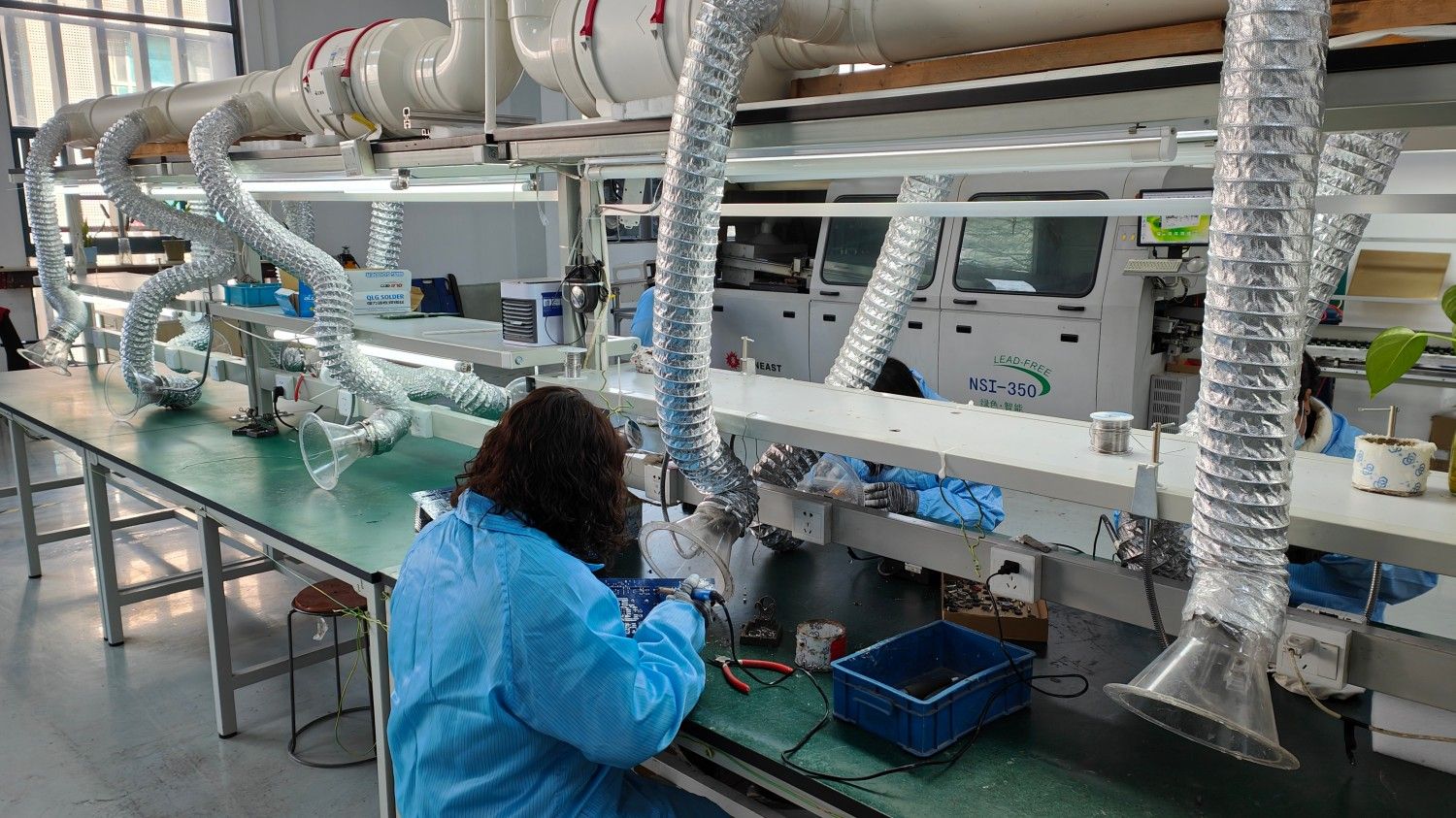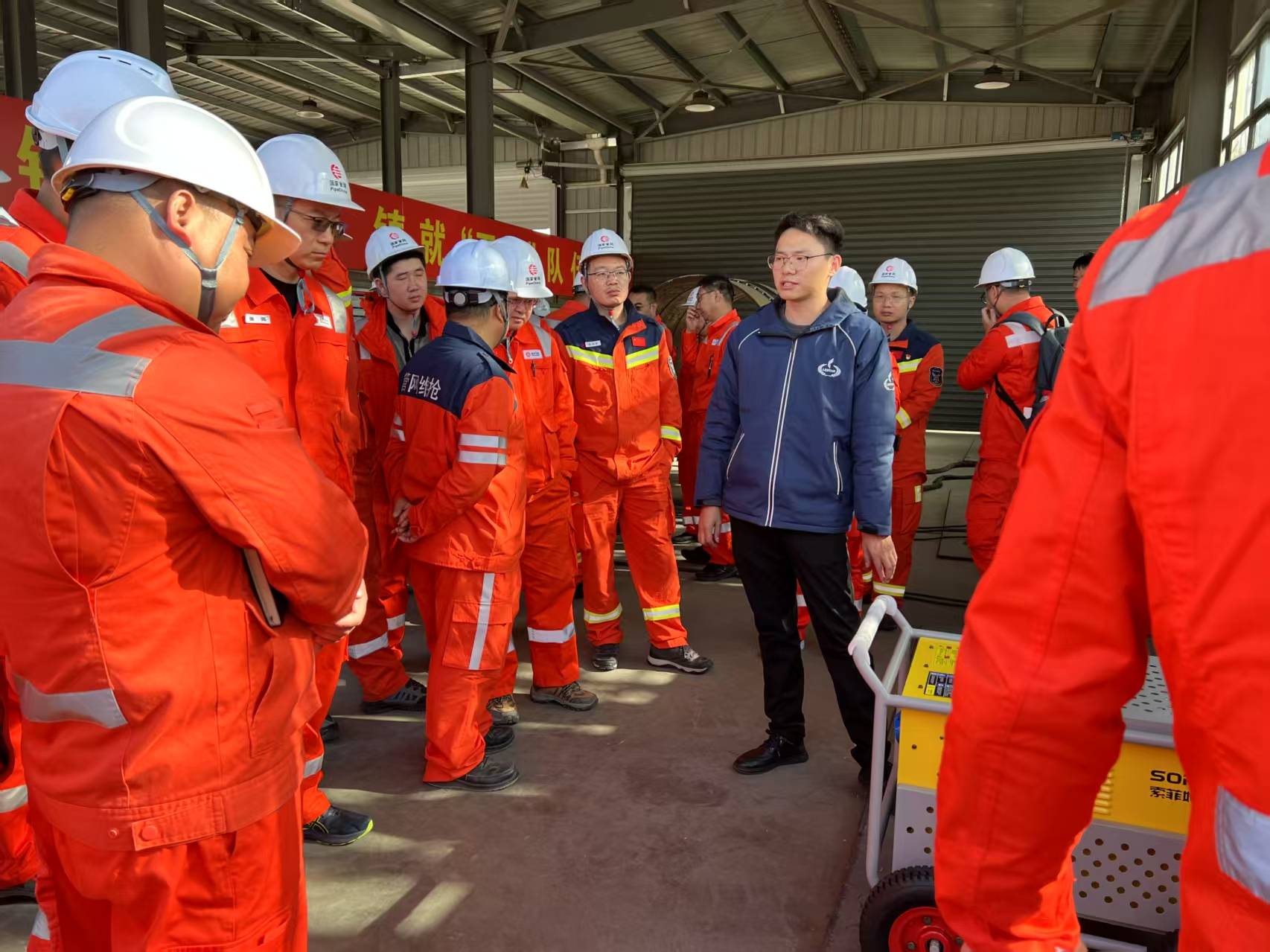20 years of experience, I’ve seen firsthand how battery-powered welders are changing the game in remote welding operations. It’s like going from using a horse and buggy to driving a sports car.
Battery-powered welders significantly improve efficiency by eliminating the need for generators or long extension cords. This allows welders to move freely and quickly set up in remote locations, saving time and reducing logistical challenges. For example, on a bridge repair project, we were able to get to work much faster using battery-powered units, completing the job ahead of schedule.
So, if you’re interested in a welding machine that is easy to carry and set up, keep reading, I will explain.
How Do Battery Welders Improve Remote Efficiency?
Ever been stuck trying to weld something in the middle of nowhere, with no power in sight?
I remember a job we had out in the desert. The only way to power our welders was with a generator, which took forever to set up and kept breaking down. Battery-powered welders solve this problem by providing a portable, reliable power source. They cut down on setup time and make it easier to move around, which means you can get more done in less time.
Battery-powered welders are transforming remote welding operations. I have spent over 20 years in welding industry. Their ability to operate without generators or power cords brings a range of advantages that boost efficiency in the field. Let’s explore how they do it:
Eliminating Setup Time
Traditional welding setups in remote locations often require significant time to:
Transport and position generators
Run long extension cords
Ensure proper grounding
Battery-powered welders eliminate these steps, allowing welders to start working almost immediately.
Increasing Mobility
With no cords or generators to worry about, welders can move freely around the job site, accessing hard-to-reach areas.
Confined Spaces: Easy to maneuver in tight spots like pipelines or inside machinery.
Elevated Work: Simplifies welding on scaffolding or high structures.
Rough Terrain: Allows for welding in uneven or difficult-to-access areas.
Reducing Downtime
Generators are prone to breakdowns and require regular maintenance. Battery-powered welders reduce downtime by:
Eliminating generator-related failures
Requiring less maintenance than generators
Providing a more reliable power source
Enhancing Safety
Cords and generators can create safety hazards in remote locations. Battery-powered welders improve safety by:
Removing tripping hazards associated with cords
Reducing the risk of electrical shock
Eliminating exhaust fumes from generators
Streamlining Logistics
Transporting generators and fuel to remote locations can be complex and costly. Battery-powered welders streamline logistics by:
Reducing the need for fuel
Simplifying transportation of welding equipment
Lowering overall operational costs
Applications
Consider these typical applications:
Pipeline Welding: Repairing pipelines in remote areas without power access.
Tower Construction: Welding on communication towers and wind turbines.
Mining Operations: Performing maintenance and repairs in underground mines.
To better understand the impact of battery powered welders, consider the following table outlining the differences between traditional and battery-powered options:
| Feature | Traditional Welder | Battery-Powered Welder |
| Power Source | AC Power | Battery |
| Setup Time | High | Low |
| Mobility | Limited | High |
| Downtime | High | Low |
| Safety | Lower | Higher |
| Logistics | Complex | Simple |
Battery-powered welders have become a game-changer in remote welding operations. Their ability to eliminate setup time, increase mobility, reduce downtime, enhance safety, and streamline logistics makes them a great choice for many applications.
How it helps remote efficiency
This allows the workforce to function better in any working environment, which leads to a more smooth operation, better use of the workforce and increased profits.
What Safety Features Are Essential for Remote Welders?
Let’s face it, remote welding can be risky business. You’re often working in tough conditions, far from help.
I’ve learned that having the right safety features on your welding equipment can make all the difference. Battery-powered welders are no exception. Look for features like overload protection, automatic shut-off, and durable construction. These features not only protect you from injury but also help extend the life of your equipment.
Ensuring safety in remote welding operations is paramount. Battery-powered welders must have several essential safety features to protect the operator and the equipment. Here’s a breakdown of the critical features and why they matter:
Overload Protection
Overload protection prevents the welder from drawing excessive current, which can cause overheating and damage to the machine.
Automatic Shut-Off: Automatically shuts down the welder when an overload is detected, preventing damage and potential hazards.
Circuit Breakers: Protects the electrical components from damage caused by excessive current.
Thermal Sensors: Monitors the temperature of critical components and shuts down the welder if overheating is detected.
Voltage Protection
Voltage protection safeguards the welder from voltage fluctuations that can damage the internal components.
Under-Voltage Protection: Shuts down the welder if the voltage drops below a safe level.
Over-Voltage Protection: Shuts down the welder if the voltage exceeds a safe level.
Surge Protection: Protects against sudden voltage spikes that can damage sensitive electronics.
Short Circuit Protection
Short circuit protection prevents damage from short circuits, which can cause fires and electrical hazards.
Automatic Shut-Off: Immediately shuts down the welder when a short circuit is detected.
Fuses: Provides a quick and reliable way to interrupt the current flow in the event of a short circuit.
Battery Management System (BMS)
The BMS monitors and manages the battery to ensure safe and efficient operation.
Overcharge Protection: Prevents the battery from being overcharged, which can damage the battery and create a fire hazard.
Over-Discharge Protection: Prevents the battery from being completely discharged, which can shorten its lifespan.
Temperature Monitoring: Monitors the battery temperature and shuts down the welder if the battery gets too hot or too cold.
Cell Balancing: Ensures that all cells in the battery pack are charged and discharged evenly, maximizing battery life and performance.
Arc Force Control
Arc force control helps maintain a stable arc, reducing the risk of arc outages and spatter.
Adjustable Settings: Allows the operator to adjust the arc force to match the welding task.
Automatic Compensation: Automatically compensates for variations in arc length, ensuring a consistent weld.
Hot Start
Hot start makes it easier to start the arc, especially with difficult-to-weld materials.
Increased Amperage: Temporarily increases the welding amperage at the start of the weld to establish a strong arc.
Reduced Sticking: Minimizes the risk of the electrode sticking to the workpiece.
Additional Safety Features
Other safety features to look for include:
Insulated Handles: Protects the operator from electrical shock.
Clear Markings: Provides clear instructions and warnings.
Durable Construction: Ensures the welder can withstand the rigors of remote work.
Here’s a table of potential issues a faulty battery powered welder can cause if it is faulty.
| Issue | Details |
| Arc Outages | This can cause the operator to get injured |
| Fires | The wires sparking in a battery powered welder can cause a fire |
| Battery Explosions | The voltage in a battery welder can cause the machine to explode |
By prioritizing these essential safety features, remote welding operations can be performed safely and efficiently, minimizing the risk of accidents and injuries.
How to ensure these features work
You should test all these features on your battery powered welder, to ensure that they work correctly. Testing them will ensure all features are working and that the machine is safe to use.
Can Battery Welders Handle Heavy-Duty Remote Tasks?
I have heard some people question if battery powered welders can handle heavy-duty tasks. Well, let me clear things up.
I’ll be straight with you, it depends on the specific welder and the task at hand. Some battery-powered welders are designed for light-duty repairs, while others can handle more demanding jobs like structural welding. The key is to choose a welder with enough power and a sufficient duty cycle for the task. With the right equipment, battery-powered welders can definitely handle heavy-duty remote tasks.
The capability of battery-powered welders to handle heavy-duty remote tasks depends on several factors. Here’s a breakdown of what to consider:
Power Output
The power output of a battery-powered welder is determined by its voltage and amperage.
Voltage: Higher voltage can improve arc starting and stability, which is important for heavy-duty welding.
Amperage: Higher amperage allows you to weld thicker materials. Look for welders with adjustable amperage settings to match the task.
Duty Cycle
The duty cycle is the percentage of time a welder can operate at a specific amperage within a 10-minute period without overheating.
Higher Duty Cycle: Essential for continuous welding tasks. Look for welders with a duty cycle of at least 40% at the desired amperage.
Battery Capacity: Larger battery capacity generally translates to a longer duty cycle.
Welding Process
Different welding processes require different levels of power and have different duty cycle requirements.
Stick Welding (SMAW): Requires higher amperage and can be demanding on the battery.
MIG Welding (GMAW): Generally requires less amperage than stick welding and is more suitable for longer welds.
TIG Welding (GTAW): Offers precise control, but can be more energy-intensive.
Material Thickness
The thickness of the material you’re welding is a critical factor.
Thicker Materials: Require higher amperage and longer welding times.
Multiple Passes: Consider using multiple passes for thicker materials to reduce the heat input and minimize distortion.
Welder Design
The design and technology of the welder play a significant role in its performance.
Inverter Technology: Inverter-based welders are more efficient and can deliver a more stable arc, making them better suited for heavy-duty tasks.
Cooling System: An efficient cooling system can prevent overheating and extend the duty cycle.
Digital Controls: Digital controls allow for precise adjustment of welding parameters, optimizing performance and results.
Examples of Heavy-Duty Tasks
Battery-powered welders can be used for a variety of heavy-duty remote tasks, including:
Structural Welding: Welding steel beams, columns, and other structural components.
Pipeline Welding: Repairing and maintaining pipelines in remote areas.
Heavy Equipment Repair: Fixing construction equipment, farm machinery, and mining equipment.
Bridge Repairs: Performing structural repairs on bridges and overpasses.
These are all things you should keep in mind when purchasing a battery powered welder.
I have made a simple table to help you select the right welder for the job:
| Amperage | Metal Thickness |
| 20A – 40A | 1/16″ |
| 40A – 80A | 1/8″ |
| 80A – 120A | 3/16″ |
| 120A – 160A | 1/4″ |
By selecting a battery-powered welder with sufficient power output, a suitable duty cycle, and appropriate features, you can tackle a wide range of heavy-duty remote tasks with confidence.
Example
Once, we had to use our battery powered welder to build steel beam columns, it held up very well.
Where to Find Battery Welders Suited for Remote Work?
Okay, so you’re sold on the idea of a battery-powered welder for your remote operations. Now, where do you actually find one that’s reliable and suited for the job?
I recommend starting with reputable welding equipment suppliers or online retailers that specialize in industrial tools. Look for brands known for quality and durability, and always read reviews from other welders before making a purchase. You can also check out trade shows and industry events to see the latest models and talk to experts in person.
Battery-powered welders suited for remote work can be found through various channels. Here’s where to look:
Welding Equipment Suppliers
Local welding equipment suppliers are a great place to start. They offer:
Expert Advice: Knowledgeable staff can help you select the right welder for your specific needs.
Hands-On Experience: You can often try out different models before making a purchase.
After-Sales Support: Provides maintenance, repairs, and warranty services.
Product Knowledge: Great help for any welding product.
Online Retailers
Online retailers offer a wide selection of battery-powered welders from various brands.
Convenience: Shop from the comfort of your home or office.
Competitive Pricing: Compare prices from different sellers to find the best deal.
Customer Reviews: Read reviews from other welders to get insights into the product’s performance and reliability.
Manufacturer Websites
Many manufacturers sell their products directly through their websites.
Direct Communication: You can contact the manufacturer directly with any questions or concerns.
Latest Models: Often features the newest models and technologies.
Warranty Information: Provides detailed warranty information and support.
Product Knowledge: They are professionals in all of the products they have on their website.
Trade Shows and Industry Events
Attending trade shows and industry events is a great way to see the latest battery-powered welders and talk to experts in person.
Product Demonstrations: See live demonstrations of the welders in action.
Networking Opportunities: Connect with other welders and industry professionals.
Special Deals: Often offers special discounts and promotions at trade shows.
New Product Releases: It is also a great way to see potential new product releases.
Factors to Consider When Choosing a Supplier
When choosing a supplier, consider the following factors:
Reputation: Look for suppliers with a good reputation and positive customer reviews.
Selection: Choose a supplier that offers a wide range of battery-powered welders to choose from.
Pricing: Compare prices from different suppliers to find the best deal.
Warranty: Ensure that the supplier offers a comprehensive warranty on the welders.
Support: Look for suppliers that provide excellent customer support and after-sales service.
My Opinion
In my professional opinion, make sure that you find a place that can offer product support. It is important that you get a good product but you also need to make sure that you can get assistance using it.
Battery-powered welders are changing remote operations. They are helpful and can perform many different tasks.If you need them, contact us now with 20 years of experience in battery powered welding machine production and delivery to provide you with service.




